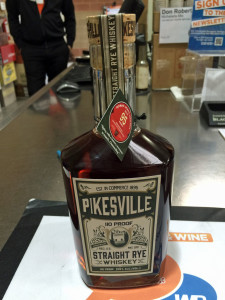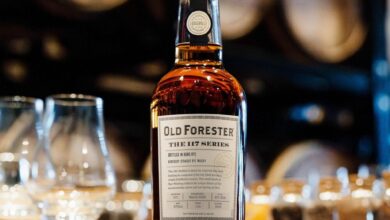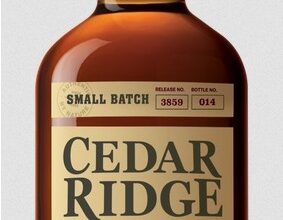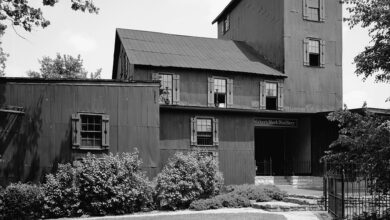The Biggest Rye Whiskey Myths
Debunking The Five Major Myths About Rye Whiskey
By Richard Thomas
The explosive growth of rye whiskey has drawn more interest in the spirit than it has enjoyed at any time since before Prohibition, but unfortunately all that interest has not wiped away some of the ignorance attached to good, old fashioned rye. Worse, some of the myths that date to the pre-whiskey boom era have been joined by new misinformation that is actually a product of whiskey’s modern popularity. Now myths about rye whiskey abound like never before, but here you can get your facts straight.
1. Rye Isn’t Actually Whiskey: “Wait,” I hear you say, “how can anyone believe this one when the word ‘whiskey’ is right there on every bottle?” Well, some people also believe bourbon isn’t whiskey either, although that myth wasn’t quite big enough to make it into our list of biggest bourbon myths.
The same thing is heard about rye too, but in this case the myth is reinforced the lyrics in Don McLean’s classic song American Pie:
Bye, bye Miss American Pie
Drove my Chevy to the levee but the levee was dry
And them good ole boys were drinking whiskey and rye
Singin’ this’ll be the day that I die
This’ll be the day that I die
The twist needed for the rhyme also implies that rye is something other than whiskey. In fact, rye is a type of whiskey, and in the United States the classification is separated from other types of whiskey by it’s 51%-plus rye mashbill.
2. Rye whiskey is a Canadian thing: This misconception embraces two related myths: that rye is a signature of Canadian whisky, and that the Canadians invented rye whiskey. This probably stems from the interchangeability of the terms “Canadian whisky” and “rye whisky” within Canada.
While it is true that the Canadian whisky tradition is infused with rye grains, the same is just as true of American whiskey. George Washington, who might have been the biggest distiller in America during and just after his Presidency, made unaged rye whiskey. So did most of the farmer-distillers he tried to stamp out in The Whiskey Rebellion. Rye actually predates bourbon in the American whiskey tradition!
This is so much the case that America once enjoyed two major regional variants. Pennsylvania ryes were noted for their sweeter character, while Maryland rye had an earthier flavor.
3. MGP makes only 95% rye: Although it is rarely said in plain English that the Indiana-based distillery MGP, producer of much of America’s stock whiskey, makes only a 95% rye mashbill whiskey, it is very clear that many bloggers, bartenders and others think as much. This is evident from the way they often automatically assume that any rye based on MGP whiskey comes from their famous 95% rye mashbill stock.
Another source for this myth is the meme that the prevalence of MGP rye whiskey products is having the side-effect of homogenizing what people expect from rye whiskey, and the even more widespread meme that all MGP-based rye whiskeys taste almost the same. To believe either of these ideas, you must also at least implicitly think all MGP rye whiskey comes from one mashbill, since one can’t believe it all more or less tastes the same without having at least that one variable in common.
In reality, MGP has three rye whiskey mashbills in production. A whiskey sourced from MGP could be based on any of them, or represent a blend of two or more of them.

(Credit: John Rayls)
4. There was no such thing as Prohibition-era, bootleg Templeton Rye: One of the problems with being the poster boy for misleading whiskey marketing is that irresponsible bloggers start matching your misinformation with lies of their own, and this is exactly what happened with Templeton Rye and their bootlegger backstory. Prior to The Daily Meal breaking the Templeton Rye story into the mainstream last year, it was a commonplace thing on the internet to dismiss the entire Templeton, Iowa moonshiner history used by Templeton Rye as being complete baloney.
The truth is that Templeton, Iowa was a hotbed for moonshining and bootlegging during Prohibition, and there is plenty of documentary evidence to prove it. An engaging book on the subject, Gentleman Bootleggers, is out there now for anyone to read. Information gleaned in that book makes it clear the real Templeton rye was a sugar-spiked, rye-based moonshine, akin to the sugar-spiked corn moonshines of the South.
5. The best rye all comes from Canada: This myth began circulating with the emergence of the premium rye whiskey imports used to make WhistlePig and Masterson’s. Jim Murray naming Crown Royal Northern Harvest Rye the best whiskey of 2015 will almost certainly expand and add steam to the idea.
Like any good myth, there is a kernel of truth to it, because the Canadians make excellent rye whiskey. They also make plenty of average rye whiskey and some pretty bad rye whiskey. The exact same thing is true of American rye, so obsessing over Canadian rye makes no more sense than dismissing all Canadian whisky as “brown vodka.”




